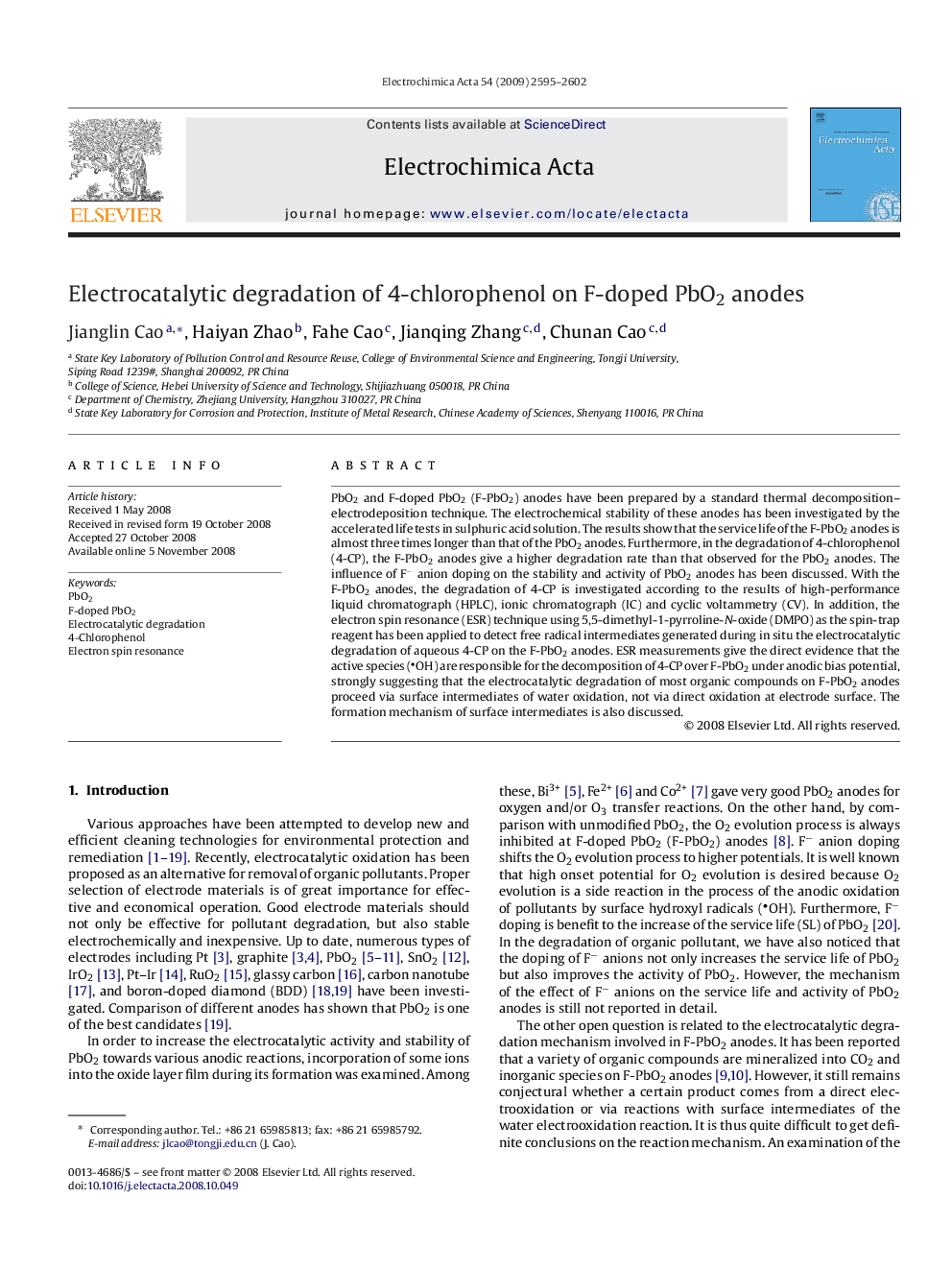| Article ID | Journal | Published Year | Pages | File Type |
|---|---|---|---|---|
| 194308 | Electrochimica Acta | 2009 | 8 Pages |
PbO2 and F-doped PbO2 (F-PbO2) anodes have been prepared by a standard thermal decomposition–electrodeposition technique. The electrochemical stability of these anodes has been investigated by the accelerated life tests in sulphuric acid solution. The results show that the service life of the F-PbO2 anodes is almost three times longer than that of the PbO2 anodes. Furthermore, in the degradation of 4-chlorophenol (4-CP), the F-PbO2 anodes give a higher degradation rate than that observed for the PbO2 anodes. The influence of F− anion doping on the stability and activity of PbO2 anodes has been discussed. With the F-PbO2 anodes, the degradation of 4-CP is investigated according to the results of high-performance liquid chromatograph (HPLC), ionic chromatograph (IC) and cyclic voltammetry (CV). In addition, the electron spin resonance (ESR) technique using 5,5-dimethyl-1-pyrroline-N-oxide (DMPO) as the spin-trap reagent has been applied to detect free radical intermediates generated during in situ the electrocatalytic degradation of aqueous 4-CP on the F-PbO2 anodes. ESR measurements give the direct evidence that the active species (OH) are responsible for the decomposition of 4-CP over F-PbO2 under anodic bias potential, strongly suggesting that the electrocatalytic degradation of most organic compounds on F-PbO2 anodes proceed via surface intermediates of water oxidation, not via direct oxidation at electrode surface. The formation mechanism of surface intermediates is also discussed.
